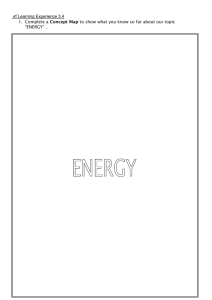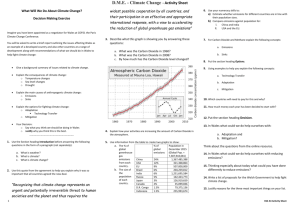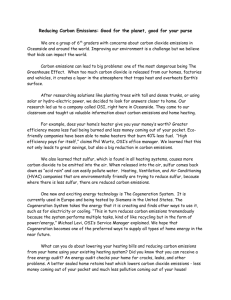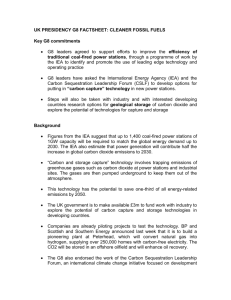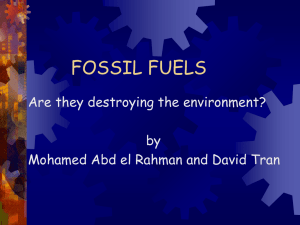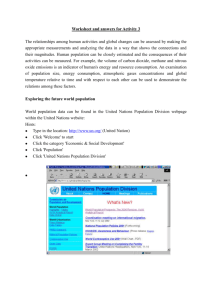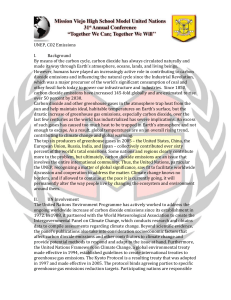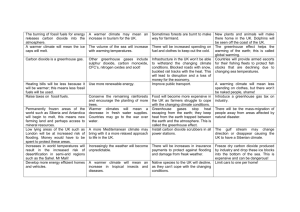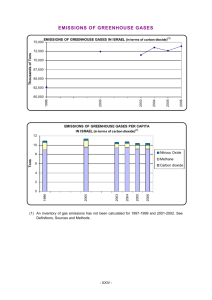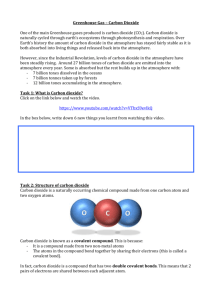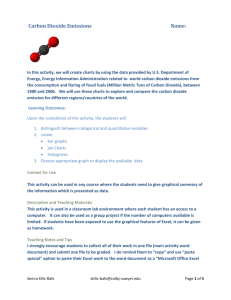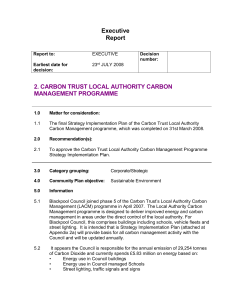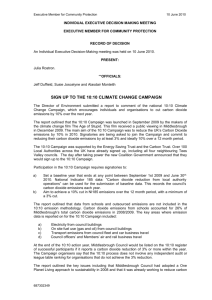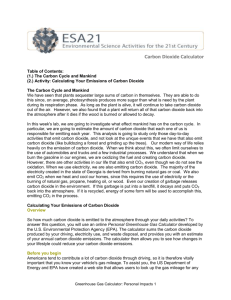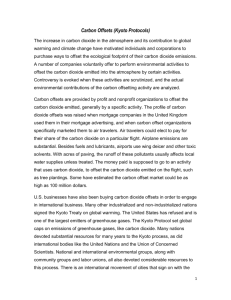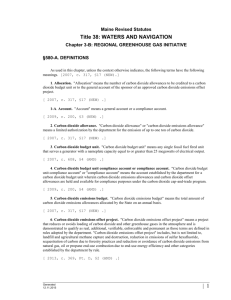MODULE 9: WHAT CAUSES CLIMATE CHANGE
advertisement
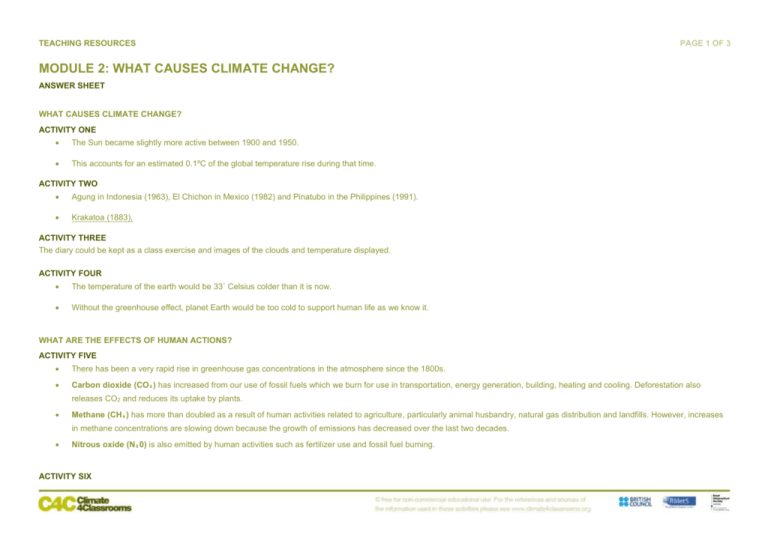
TEACHING RESOURCES PAGE 1 OF 3 MODULE 2: WHAT CAUSES CLIMATE CHANGE? ANSWER SHEET WHAT CAUSES CLIMATE CHANGE? ACTIVITY ONE The Sun became slightly more active between 1900 and 1950. This accounts for an estimated 0.1ºC of the global temperature rise during that time. ACTIVITY TWO Agung in Indonesia (1963), El Chichon in Mexico (1982) and Pinatubo in the Philippines (1991). Krakatoa (1883), ACTIVITY THREE The diary could be kept as a class exercise and images of the clouds and temperature displayed. ACTIVITY FOUR The temperature of the earth would be 33˚ Celsius colder than it is now. Without the greenhouse effect, planet Earth would be too cold to support human life as we know it. WHAT ARE THE EFFECTS OF HUMAN ACTIONS? ACTIVITY FIVE There has been a very rapid rise in greenhouse gas concentrations in the atmosphere since the 1800s. Carbon dioxide (CO₂) has increased from our use of fossil fuels which we burn for use in transportation, energy generation, building, heating and cooling. Deforestation also releases CO2 and reduces its uptake by plants. Methane (CH₄) has more than doubled as a result of human activities related to agriculture, particularly animal husbandry, natural gas distribution and landfills. However, increases in methane concentrations are slowing down because the growth of emissions has decreased over the last two decades. Nitrous oxide (N₂0) is also emitted by human activities such as fertilizer use and fossil fuel burning. ACTIVITY SIX MODULE 2: WHAT CAUSES CLIMATE CHANGE? | ANSWER SHEET The model simulations do not do a good job of recreating the observed temperature changes, especially in the second half of the century (red line). When told about natural and human-made changes to the atmosphere, climate models (green shaded area) recreate observed temperatures very well. PAGE 2 OF 3 ACTIVITY SEVEN Students can work in pairs or small groups to complete the task depending on the length of time available. There should be an opportunity for the students to present their PowerPoints and for some peer review. Alternatively the presentation could be made using a poster format covering the same topics. Aims: To examine which sources of CO2 are driving increased greenhouse gas emissions into our atmosphere. To investigate where in the world increased greenhouse gas emissions are coming from. To look behind the data to examine why some countries are producing more carbon dioxide than others. ACTIVITY EIGHT The rise in carbon dioxide emissions begins around 1900 This is because of the greater industrialization, particularly of the north western world. The graph shows a rapid rise in CO₂ emissions from fossil-fuel burning, between 1950 and 2000. This is because of greater use of the internal combustion engine in cars and greater industrialization powered by fossil fuels. ACTIVITY NINE As wealth increases so do the emissions. As population increases so do emissions. ACTIVITY TEN The map shows total carbon emissions from each country. The table shows emissions per person in each country. This means that both changing population and changing emissions can change a countries rank in the table. A country might be ‘oversize’ because it has more people per unit area, or because each person emits more carbon dioxide. Students can use the map and the table beneath it to identify the countries such as USA, Qatar and Japan. It means people use less fossil fuels per person in the countries with lower emissions. Africa Value is the number of tonnes of carbon dioxide emitted per person in the country. MODULE 2: WHAT CAUSES CLIMATE CHANGE? | ANSWER SHEET PAGE 3 OF 3 Examples of countries whose position in the list has changed are Luxembourg, USA and Qatar. They are all emitting more carbon dioxide per person than they were in 1980. However, Quatar is emitting much more carbon dioxide per person than it was in 1980, causing it to rise from 4 th to 1st worst emitter. The USA is emitting slightly more, but has been overtaken by two countries in the rankings. Luxembourg has reduced its carbon dioxide emission per person considerably, perhaps because of changes in the way energy is produced in that country. Western Europe has reduced its emissions slightly in the period 1980 – 2000. This may be partly due to the boom in North Sea oil in this period, which is a cleaner fuel than coal. ACTIVITY ELEVEN China has overtaken the USA in terms of the amount of carbon dioxide it produces per person because its manufacturing industries burn a lot of fossil fuels to make toys, steel and electrical goods. These goods are then transported all over the world because consumers are demanding the cheap goods that are produced by China. Americans are more likely to drive large ‘gas guzzling’ cars, use air conditioning and have central heating. However in the newer urban areas housing is being built with central heating and air conditioning and as more Chinese people begin to drive cars rather than use bicycles so the amount of carbon dioxide produced by Chinese in urban areas will increase. The increase is likely to be less in the rural areas but as electricity supplies become available in the rural areas carbon dioxide emissions will rise unless the electricity is supplied from a sustainable source such as HEP or wind power. ACTIVITY TWELVE The statements could be cut up into strips to allow for easier categorisation

